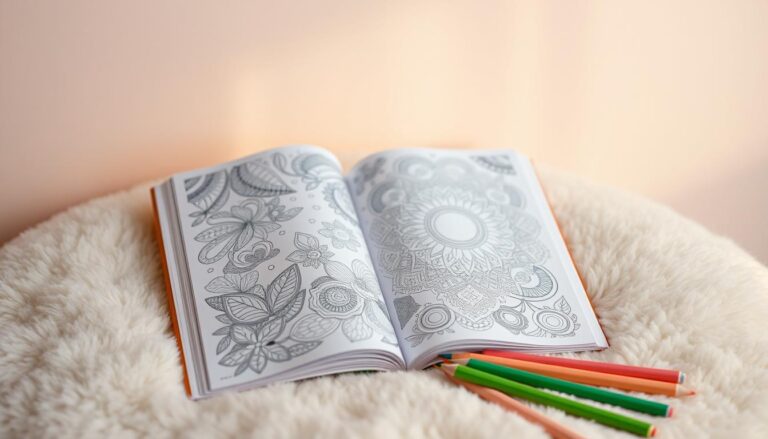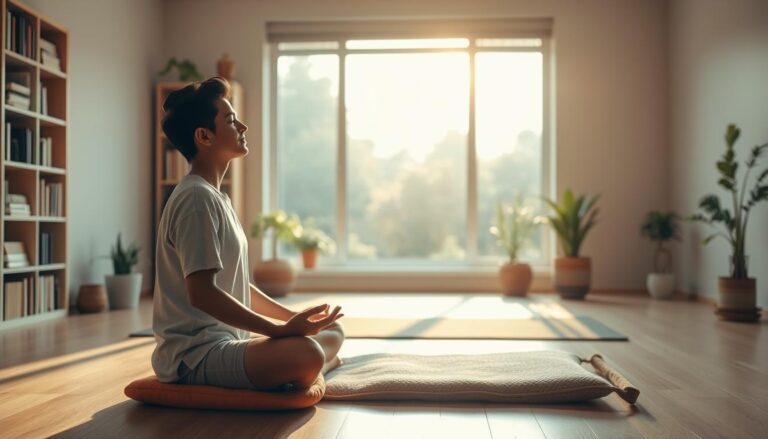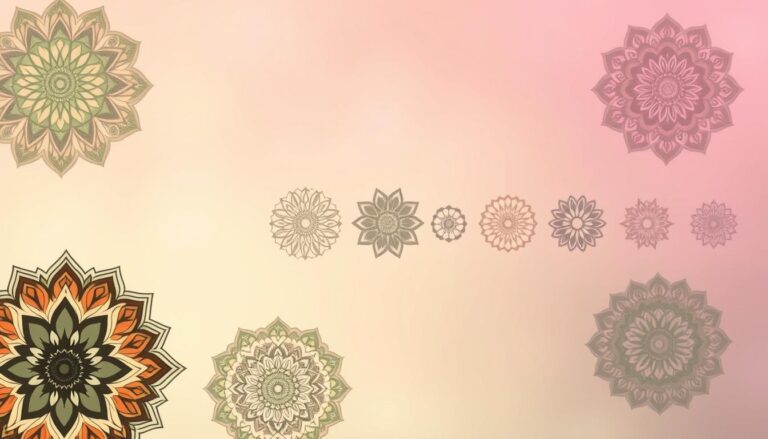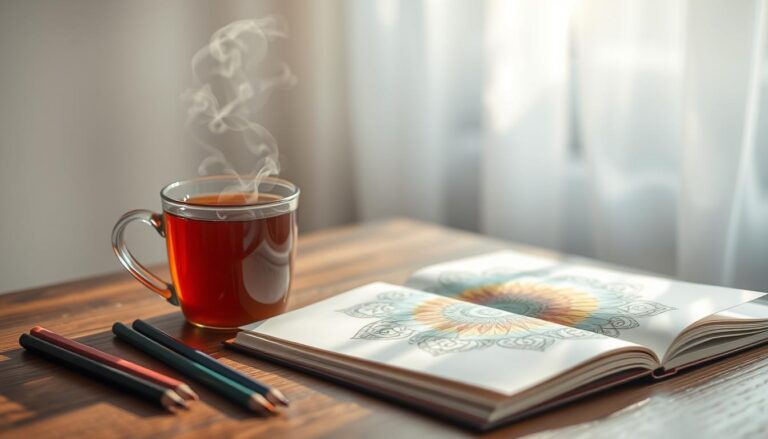Coloring Meditation: Step-by-Step Guide for Beginners
Discover the benefits of coloring meditation. Learn how to practice this relaxing technique with our step-by-step guide for beginners.
Do you ever feel like you need a mental break but find traditional relaxation methods challenging? There is a wonderfully simple way to find calm. This guide introduces a unique technique that blends creative expression with mindful focus.
This art-based practice is incredibly accessible. You don’t need any special skills or experience to get started. It’s about the process, not creating a perfect piece of art. The act itself is a gentle form of mindfulness.
Many people find this approach to be a peaceful and therapeutic exercise. It helps quiet a busy mind by giving it a simple, focused task. You can experience the benefits in just a few minutes each day.
Key Takeaways
- This practice is an easy way to combine creativity with relaxation.
- No artistic talent or previous experience is required to begin.
- The technique helps focus your mind on the present moment.
- It serves as a gentle introduction to mindfulness principles.
- You can start this rewarding routine with minimal supplies.
- The process is designed to be a stress-reducing activity.
- This method is rooted in tradition but fits modern lifestyles.
Discover the World of Coloring Meditation
What if you could access centuries-old wisdom through a simple creative activity? This practice connects you to ancient traditions while offering modern stress relief.
Understanding the Concept and History
The foundation of this practice lies in mandalas—sacred circular designs with deep spiritual meaning. These intricate patterns represent the cyclical nature of life and have been used for centuries in Hindu and Buddhist traditions.
You’ll find symbolic elements like lotus flowers, geometric patterns, and nature motifs throughout these designs. Each symbol carries meaning that can deepen your connection to the practice.
Today, this ancient form has evolved into a accessible wellness activity. People of all age groups can benefit from this approach to relaxation.
Key Benefits for Mindfulness and Stress Relief
Research studies show significant health benefits from this practice. The repetitive movements help calm your heart rate and bring mental clarity.
This activity stimulates melatonin release, improving sleep quality and slowing cell aging. Both children and adults experience reduced anxiety levels through regular practice.
You don’t need special artistic tools to begin. Simple books with mandala designs provide everything for immediate therapeutic benefits.
Step-by-Step Guide to Coloring Meditation
Unlocking the relaxing benefits of focused creativity begins with creating the right environment and having the right tools at hand. This straightforward process is designed for immediate enjoyment.
Gathering Your Tools and Materials
Your journey starts with simple supplies. A book filled with mandala designs and a basic set of colored pencils or crayons is all you need.
Choose simpler patterns for your first session. This allows you to focus on the calming activity without frustration.
Setting Up a Relaxing Space
Find a quiet spot with good light. A comfortable chair and a flat surface help you relax. This prepares you for a peaceful practice.
Simple Techniques for Beginners
A great beginner technique is to apply light color first. Then, gently layer more color to build depth.
You can blend different pencils to create new shades. For a smooth finish, try a white pencil over colored areas.
Remember, there are no mistakes in this meditation. Choose any color you like and work at your own pace.
| Tool | Best For | Ease of Use | Blending Ability |
|---|---|---|---|
| Colored Pencils | Precise details and shading | High | Excellent |
| Crayons | Bold, vibrant coverage | Very High | Good |
| Fine-Tip Markers | Sharp lines and solid fills | Medium | Low |
This coloring method is a wonderful way for both children and adults to find quiet focus. Your personal way is the right one.
Enhancing Mindfulness Through Art and Meditation
What if your daily art activity could become a powerful tool for training your mind to stay present? This approach blends creative expression with focused awareness for deeper relaxation.
Integrating Art Therapy and Mindful Practices
When you apply art therapy principles to your creative work, you transform simple coloring into a mindfulness practice. The key is focusing on how you choose and apply each color.
This brings your full attention to the present moment. If your thoughts wander, gently guide them back by describing your actions.
Say to yourself, “I am picking up a blue pencil for this section.” This technique keeps you engaged in the now.
Release judgment about whether your work is “good” or “bad.” The process matters more than the final result.
Research Insights on Reducing Anxiety with Coloring
Scientific studies reveal fascinating benefits. Research with adults shows that just 10 minutes of focused coloring produces significant anxiety reduction.
One landmark study asked, “Can Coloring Mandalas Reduce Anxiety?” The answer was clear: this activity draws your mind into a calm state.
It helps organize troubling thoughts and calm inner chaos. People report better relaxation after stressful days.
Interestingly, guided sessions work best. When participants received mindfulness instructions during coloring, they experienced greater anxiety relief.
This combination creates a powerful way to achieve mental calm. The art keeps you engaged while training your attention.
Conclusion
You’ve uncovered a simple yet powerful method to transform ordinary moments into opportunities for peace and focus. This gentle practice brings mindfulness into your daily life through creative expression. The benefits extend far beyond the page.
Whether you choose intricate mandalas or simple patterns, this technique adapts to your needs. Coloring books for kids and children make it family-friendly. Research studies confirm this form of activity reduces stress.
Start your journey today with basic supplies. Let each color choice and hand movement guide you to the present moment. This accessible path to inner peace awaits your discovery.








3 Comments